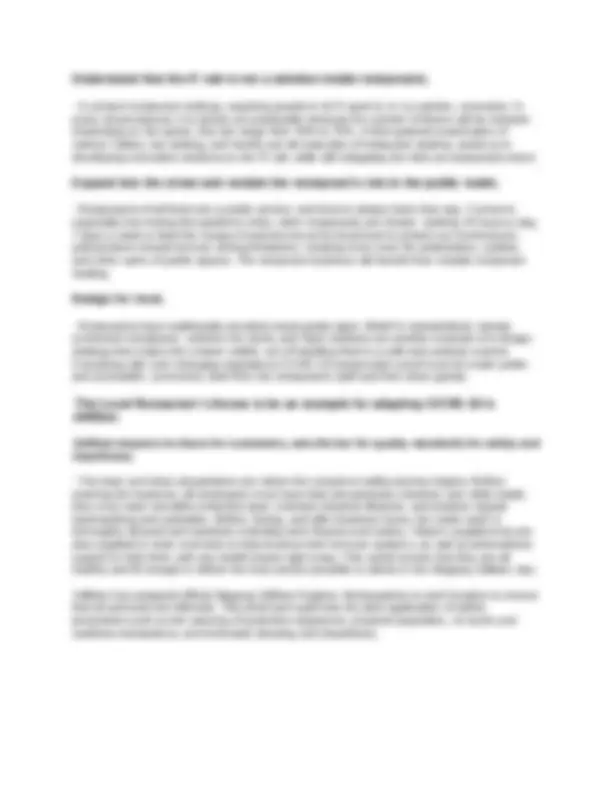



Study with the several resources on Docsity

Earn points by helping other students or get them with a premium plan


Prepare for your exams
Study with the several resources on Docsity

Earn points to download
Earn points by helping other students or get them with a premium plan
Community
Ask the community for help and clear up your study doubts
Discover the best universities in your country according to Docsity users
Free resources
Download our free guides on studying techniques, anxiety management strategies, and thesis advice from Docsity tutors
Design strategies for restaurant reopening during the pandemic, focusing on the case study of jollibee. The author explores the importance of restaurants in community recovery and the need for spatial awareness, new food safety protocols, and trust-building measures. Insights into flexible reconfiguration, surface infection management, expanding into the street, and designing for trust.
Typology: Study notes
1 / 2

This page cannot be seen from the preview
Don't miss anything!


Our Lady of Fatima University – Antipolo Campus College of Hospitality and Institutional Management ACCOMMODATION OPERATIONS AND MANAGEMENT
Restaurants are an important aspect of our public sphere since they serve as places of hospitality, gathering, and entertainment. Birthdays, anniversaries, and our daily lives are all examples of this. In the middle of the worldwide coronavirus outbreak, When the whole nature of public space has become both perilous and perilous, the future seems bleak. The future of the restaurant sector has been called into doubt, and its destiny remains unknown. One thing is certain: restaurants play a critical role in our communal post-pandemic recovery. They must be empowered to be active in the future if they are to be able to return to them safely. participants in the trust-building process There are no specific design guidelines or building codes in place at this time. algorithms that were created specifically to respond to the new coronavirus. The best case scenario is that The 6' social separation suggestion reflects a growing understanding of the virus's effects. transmission. Restaurants could benefit from spatial guides in the short and long term. and cues to ensure that operations are optimized and that employees are kept secure. With the notion that "returning" is a good thing. When "returning to normal" isn't viable, either operationally or monetarily, we look at the geographical nature of the problem. link between modern food safety, cleanliness, and restaurant viability
Examine the spaces of your restaurant with flexible reconfiguration in mind.
Jollibee reopens its doors for customers, sets the bar for quality standards for safety and cleanliness.